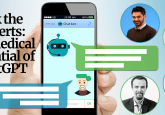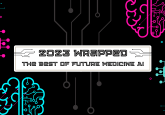BioGPT unearths novel targets against age-related diseases

Another AI chatbot is stealing ChatGPT’s thunder… Going by the name of BioGPT, this large language model (LLM) is a game-changer for biomedical research, aiding scientists in drug discovery, clinical decision support and disease classification. Recently, it has shown exciting potential to advance age-related research.
One of ChatGPT’s counterparts has taken the center stage with its impressive discoveries in anti-aging and age-related disease research, pinpointing a total of nine potential targets that could slow the aging process. Perhaps most profound was the revelation that two of these targets were novel, having never been previously believed to be age-related.
Freckles, wrinkles, age spots, moles, scars. These are the markings of life that we accumulate alongside each memory we acquire, they are proof of our presence and evidence of our existence in the world. Yet aging can also accompany the burdens of common age-related conditions due to increasing senescence. In fact, age-related diseases account for around 50% of the total disease burden globally, providing perspective on the importance of aging research.
Currently commanding all the anti-aging research limelight, BioGPT is a generative language model created by Microsoft that has been trained on vast amounts of published biomedical research articles. It was primarily created for biomedical text generation, answering questions and data mining, making it an invaluable tool for biomedical applications. And it consistently outperforms other GPT models in biomedical tasks, as well as boasting ‘human parity’ in its answers.
In a study published in Aging, researchers from Insilico Medicine (Hong Kong) used BioGPT to predict therapeutic targets for age-related diseases. They did this by training BioGPT on a large dataset of task specific text (900,000 grant proposals from the National Institutes of Health), and developing a pipeline for target discovery, which included the prompt, probability of retrieving tokens, and gene probability calculation.
Following several cycles of probability retrieval, nine potential targets were identified, five of which were dual-purpose targets against aging and 14 age-related diseases, including osteoporosis, Alzheimer’s disease and pulmonary arterial hypertension. Two targets (CCR5 and PTH) were discovered to be novel age-related targets.
Tao Qin, Senior Principal Researcher at Microsoft Research AI4Science, remarked, “BioGPT can learn and understand large amounts of medical literature, thereby empowering practical processes including novel drug research and development, medical knowledge graph development, precision medicine, and medical dialogue assistance systems, and driving new biotechnology developments.”
“The research results released by Insilico Medicine shed light on new practical application scenarios for BioGPT and other LLM-based AI engines. We look forward to further real-world applications and more breakthroughs.”





